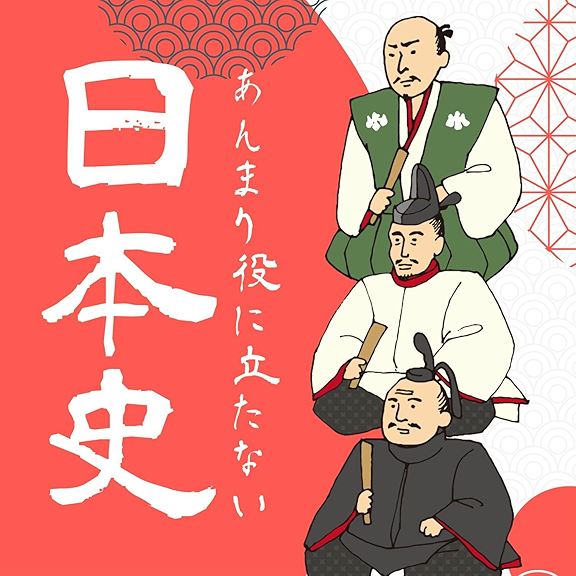
INTRODUCTING! Our first coffee brand LITTLE GROUND TOP, expertly roasted by our friends at Bantam Roaster. Order your bags at https://www.addressinggettysburg.com/cafe
THIS EPISODE was made possible by our generous Patrons. Become one today and get more than you bargain for! www.patreon.com/addressinggettysburg
On the first day of July, they arrived shrouded in a foreboding misty rain. The Confederate infantry division of Major General Henry Heth from A.P. Hill's Third Corps advanced towards Gettysburg under a veil of uncertainty. While crossing a bridge over Marsh Creek, the head of Heth's column was halted by the familiar "pop" of enemy small arms some 700 yards away. It was a shot from the carbine of the 8th Illinois Cavalry's Lieutenant Marcellus Jones.
The ball had begun; The Battle of Gettysburg was underway.
The gray soldiers, anticipating a militia, were surprised by Union cavalry. This surprise, however, did not deter them. Instead, it spurred them into a cautious advance, moving from column into skirmish lines in the fields north and south of the Chambersburg Pike.
John Buford, the Union Cavalry commander, was tactically maneuvering to buy time—time that the Union left-wing commander, John Reynolds, needed to rush his infantry up to Gettysburg. Buford had gathered intelligence that Confederate soldiers were to the north and west of Gettysburg. Armed with this crucial information, Buford strategically positioned his men to cover every major road coming in from the west, north, and east of Gettysburg. The shots fired indicated that the first Confederates were approaching from the west, a testament to Buford's strategic foresight.
Upon being fired upon, the Confederates, seemingly undeterred by the presence of Union Cavalry, began a slow and methodical advance. Like a grey bank of storm clouds, they pushed back Buford's men from Knoxlyn Ridge to Herr's Ridge and, finally, to McPherson's Ridge, where Buford intended to hold until the infantry arrived. At Willoughby's Run, in the valley between Herr's and McPherson's Ridges, the veteran Confederate infantry briefly halted and organized themselves before pressing onward up the slope against Buford's brigades under Colonel Gamble and Devin.
Just as the Confederates were gaining ground, the emergence of Union infantry, a complete shock to them, marked a significant turning point in the morning's battle. The unexpected arrival of the Union infantry changed the dynamics of the fight, and what started as a skirmish between cavalry and infantry was about to become a full-throated battle.
Brigadier General Joseph Davis's Brigade of Mississippi and North Carolina men rapidly approached Cutler's right-two regiments, the 76th N.Y. and 56th P.A., from the west. The 56th Pennsylvania opened fire first with the command, 'Ready, right oblique! Aim! Fire!' The 2nd Mississippi and 55th North Carolina returned fire. Some of these shots raked the 76th New York as they got into position to the Pennsylvania men's right. At first, the 76th's commander didn't realize that these shots were from the enemy as he could not see any. He urged his men to hold their fire. Then a second volley came in, and still they held their fire. Finally, the 2nd Mississippi came into sight, and Major Grover, the 76th's commander, ordered his men to fire.
After about a half-an-hour of fighting, three of Cutler's regiments, the 56th P.A. and the 76th and 147th N.Y., withdrew to Oak Ridge, having lost half of their men.
Davis's men pursued Cutler's shattered regiments to Oak Ridge.
Cutler had left two regiments on the south side of the Chambersburg Pike at the McPherson Farm. They had skirmished with Archer's brigade as it approached from the west. Cutler's sister brigade, the Iron Brigade under Solomon Meredith, had arrived on the field and was pushing into McPherson's Woods, thereby freeing up Cutler's remaining two regiments, the 84th and 95th N.Y., to turn and face the threat posed by Davis's men.
Acting Corps commander Major General Abner Doubleday ordered the only reserve he had, the 6th Wisconsin, to leave its reserve position and "Go like Hell" toward Davis. Rufus Dawes, the 6th's commander, put his men in line to the right of the 95th N.Y. Aiming into Davis's flank, the New York and Wisconsin men opened fire, stopping Davis's pursuit.
Then, suddenly, the Confederates appeared to vanish into the earth. They had taken refuge in an unfinished railroad cut that paralleled the Chambersburg Pike.
What seemed a safe haven had proved to be a trap, and the Wisconsin and New York boys were ready to take advantage of it.
Meanwhile, acting left-wing commander Major General John F. Reynolds was personally feeding units of the Iron Brigade into McPherson's Woods, something a man in his position should not do. While doing this, a Confederate bullet struck him in the head. Within 30 minutes of being on the field, the man who was leading the Union effort that morning was dead.
The Iron Brigade pushed into McPherson's Woods. After a series of bloody fights, Archer's Confederates were repulsed. Archer, himself, became a Union prisoner.
As Confederates reeled from their sudden repulse, a lull in the fighting followed as commanders decided what to do next, and reinforcements filtered in from directions north and south.
That is when, in the early afternoon, Lieutenant General Richard S Ewell's Confederate Second Corps, coming in from the north, suddenly attacked. Seeing the vulnerability of the Union position and the increasing Union reinforcements, Ewell decided to attack without orders to do so. One of his divisions, under Robert Rodes, attacked the Union First Corps' position in an ill-coordinated series of assaults. This attack, too, was repulsed. Confederate Army Commander Robert E. Lee, lacking detailed information, was initially hesitant to attack. Lee reached the battlefield around noon and gathered what information he could. Finally, he decided to capitalize on the actions of his subordinates and arriving reinforcements. Lee issued the order to attack.
By now, the Union First Corps and Oliver Otis Howard's Eleventh Corps were up in full. Howard deployed his men on the plane north of Gettysburg, near Pennsylvania College. This was not the position Howard had initially wanted to hold, but the appearance of Rodes' division on Oak Hill left him little other choice.
The Union soldiers on the ridges west of town and on the plane north of town would soon find themselves overwhelmed by lines and lines of Butternut and Gray. Fierce firefights erupted, indicated by plumes of smoke and the rattle of musketry along the two-and-a-half-mile line. Union soldiers tried to hang on to their positions desperately. Despite their best efforts to hold back this Confederate tide, the Union's position crumbled as each Confederate attack landed like a sledgehammer blow.
The disorganized remnants of Union regiments streamed through the streets of Gettysburg, finally stopping on a hill south of town crowned by a cemetery. There, they found Eleventh Corps Commander O.O. Howard and his reserve. The First and Eleventh Corps' shattered elements rallied on this formidable position.
When Union army commander George Meade learned of General Reynolds's death, he dispatched Major General Winfield Scott Hancock, made commander of the Second Corps after the Battle of Chancellorsville, to ride to Gettysburg and act in his stead. Hancock traveled in an ambulance, studying maps of the area. After conferring with Howard and relaying Meade's orders, Hancock and Howard began organizing defenses. The tired and sweat-stained men rallied and built fortifications, bracing themselves for the attack they were sure would follow.
A wooded prominence to the right of Cemetery Hill caught Hancock's eye, compelling him to send the newly-arrived regiment from Cutler's Brigade, the 7th Indiana, to occupy it. This hill was Culp's Hill.
The Confederates were just as disorganized in victory as the Union soldiers had been in defeat. Daylight was fading fast, progress through the streets of Gettysburg was painfully slow for the Confederates, and rumors of Union reinforcements coming in from the east caused delays. Moreover, ambiguous discretionary orders left the decision to subordinate Confederate commanders to continue pressing the attack. Each commander assessed their situation and decided not to attack.
The first day bore witness to some of the bloodiest fighting of the American Civil War, with a combined total of 16,000 killed, wounded, and captured. It was a stunning tactical success for Robert E Lee's Army of Northern Virginia, leaving two Union corps driven from their positions and wrecked to a fraction of what they once were. Still, the price had been high for the Confederates. The 26th North Carolina of Pettigrew's Brigade entered the battle with over 800 men. By the end of the battle, they will have lost over five hundred, with most of them sustained in the fighting on July 1st.
One question that plagued General Lee was, "Where is General Stuart?" JEB Stuart, acting on orders from Lee, had ridden around the Union Army, managing to cut himself off from communication with Lee. Lee did have cavalry at his disposal. His need, however, was not for cavalry units but for JEB Stuart's ability to analyze military intelligence.
Seeing the Union forces streaming back to Cemetery Hill, Lee made a fateful decision.
Pointing in the direction of the Army of the Potomac, Lee turned to his "Old War Horse," James Longstreet, and said, "If He is there in the morning, I will attack Him."
The attitude behind these words would lead to the bloodiest battle of the American Civil War.
Battle of Gettysburg 161st Anniversary Special- July 1, 1863
Featuring Licensed Battlefield Guides Larry Korcheck, Jim Pangburn, Charlie Fennell and Rob Abbott
Summary written by Michael "Six Questions" Lentz
Script written by Matt Callery
Narration, direction and editing by Matt Callery
Some Sound Effects Provided by QuantumEra
Other Sound Effects synthesized, found in the public domain or recorded by Matt Callery or Ty DeWitt
Music found on Epidemic Sound dot com
Copyright 2024. Addressing Gettysburg LLC. All rights reserved.




















